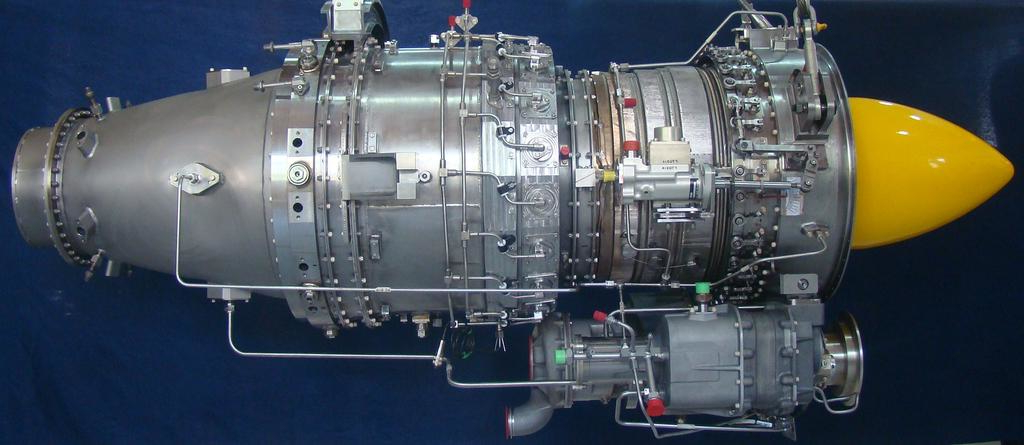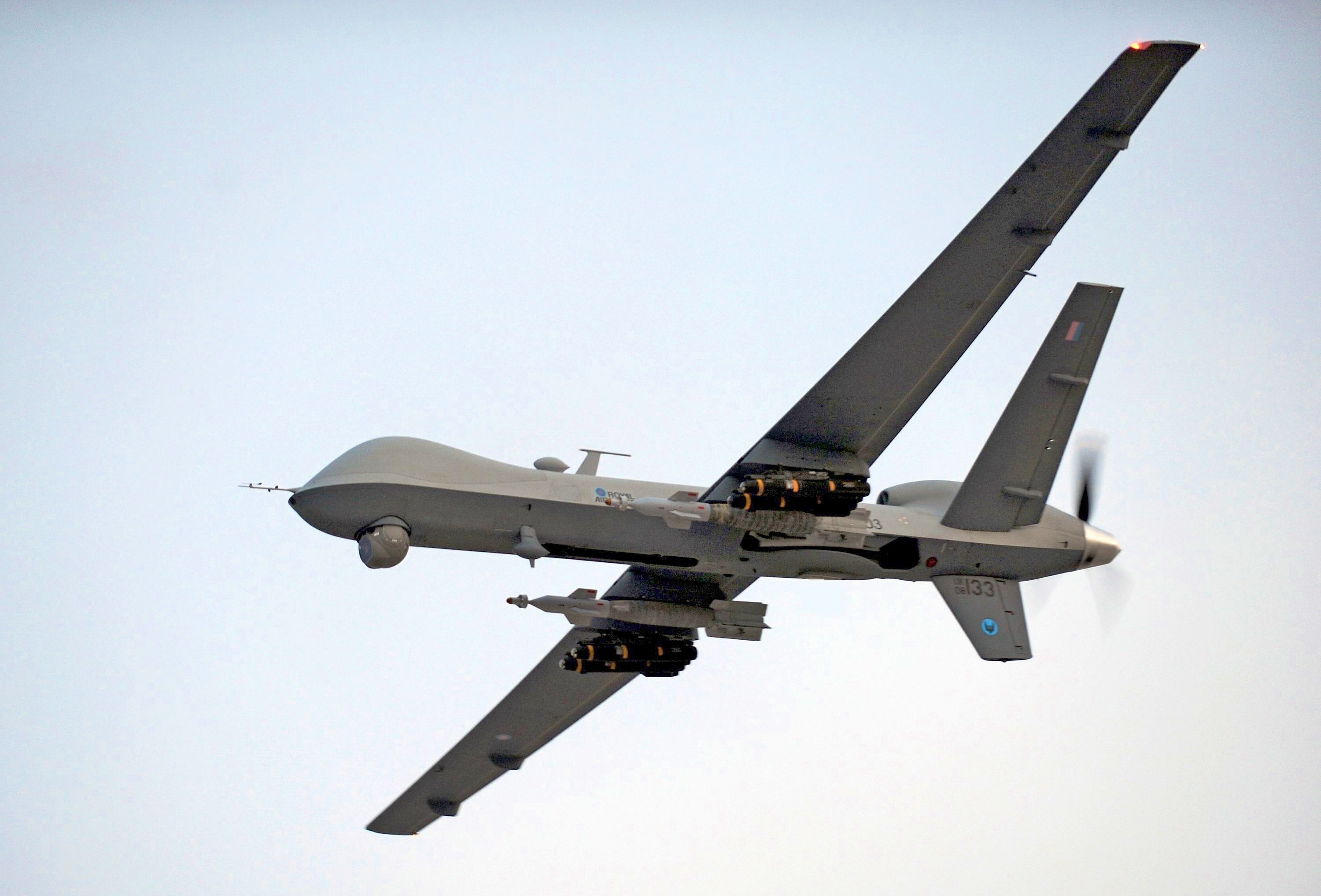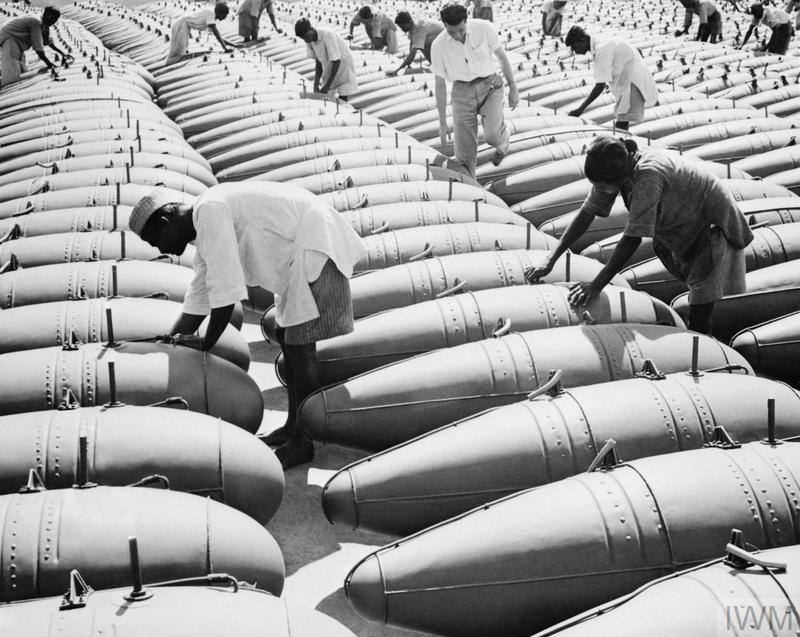|
HAL CATS Warrior
CATS Warrior is a part of the HAL Combat Air Teaming System program. Its work is believed to have started in early 2019 under a Public Private Partnership (PPP) between the state owned HAL and an Indian private startup Newspace R&D. HAL has done an initial investment of ₹400 crore in CATS Warriors & in Aero India 2021 a full-scale mock-up model was presented for the first time. Development CATS Warrior will be an autonomous wingman drone capable of take off & landing from land & in sea from an aircraft carrier, it will team up with the existing fighter platforms of the IAF like Tejas, Su-30 MKI and Jaguar which will act like its mothership. The Warrior is primarily envisioned for the Indian Air Force use and a similar, smaller version will be designed for the Indian Navy. It would be controlled by the mothership and accomplish tasks such as scouting, absorbing enemy fire, attacking the targets if necessary with its internal & external pylons weapons or sacrifice itself ... [...More Info...] [...Related Items...] OR: [Wikipedia] [Google] [Baidu] |
Unmanned Combat Aerial Vehicle
An unmanned combat aerial vehicle (UCAV), also known as a combat drone, colloquially shortened as drone or battlefield UAV, is an unmanned aerial vehicle (UAV) that is used for intelligence, surveillance, target acquisition, and reconnaissance and carries aircraft ordnance such as missiles, ATGMs, and/or bombs in hardpoints for drone strikes. These drones are usually under real-time human control, with varying levels of autonomy. Unlike unmanned surveillance and reconnaissance aerial vehicles, UCAVs are used for both drone strikes and battlefield intelligence. Aircraft of this type have no onboard human pilot. As the operator runs the vehicle from a remote terminal, equipment necessary for a human pilot is not needed, resulting in a lower weight and a smaller size than a manned aircraft. Many countries have operational domestic UCAVs, and many more have imported armed drones or are in the process of developing them. History One of the earliest explorations of the concep ... [...More Info...] [...Related Items...] OR: [Wikipedia] [Google] [Baidu] |
HAL PTAE-7
Hindustan Aeronautics Limited (HAL) is an Indian state-owned aerospace and defence (military), defence company, headquartered in Bangalore, India. Established on 23 December 1940, HAL is one of the oldest and largest aerospace and defence manufacturers in the world today. HAL began aircraft manufacturing as early as 1942 with licensed production of Harlow PC-5, Curtiss P-36 Hawk and Vultee A-31 Vengeance for the Indian Air Force. HAL currently has 11 dedicated Research and development (R&D) centers and 21 manufacturing divisions under 4 production units spread across India. HAL is managed by a Board of Directors appointed by the President of India through the Ministry of Defence (India), Ministry of Defence, Government of India. HAL is currently involved in designing and manufacturing of fighter jets, helicopters, jet engine and marine gas turbine engine, avionics, software development, spares supply, overhauling and upgrading of List of active Indian military aircraft, Indian mi ... [...More Info...] [...Related Items...] OR: [Wikipedia] [Google] [Baidu] |
Loitering Munition
A loitering munition (also known as a suicide droneLoitering Munitions – In Focus Center for the Study of the Drone, Feb 2017 or drone) is an aerial weapon system category in which the loiters (waits passively) around the target area for some time and attacks only once a target is located. [...More Info...] [...Related Items...] OR: [Wikipedia] [Google] [Baidu] |
Precision Guided Munitions
A precision-guided munition (PGM, smart weapon, smart munition, smart bomb) is a guided munition intended to precisely hit a specific target, to minimize collateral damage and increase lethality against intended targets. During the First Gulf War guided munitions accounted for only 9% of weapons fired, but accounted for 75% of all successful hits. Despite guided weapons generally being used on more difficult targets, they were still 35 times more likely to destroy their targets per weapon dropped. Because the damage effects of explosive weapons decrease with distance due to an inverse cube law, even modest improvements in accuracy (hence reduction in miss distance) enable a target to be attacked with fewer or smaller bombs. Thus, even if some guided bombs miss, fewer air crews are put at risk and the harm to civilians and the amount of collateral damage may be reduced. The advent of precision-guided munitions resulted in the renaming of older, low-technology, bombs as "ungu ... [...More Info...] [...Related Items...] OR: [Wikipedia] [Google] [Baidu] |
ASRAAM
The Advanced Short Range Air-to-Air Missile (ASRAAM), also known by its United States designation AIM-132, is an imaging infrared homing (heat seeking) air-to-air missile, produced by MBDA UK, that is designed for close-range combat. It is in service in the Royal Air Force (RAF), replacing the AIM-9 Sidewinder. ASRAAM is designed to allow the pilot to fire and then turn away before the opposing aircraft can close for a shot. It flies at well over Mach 3 to ranges in excess of . It retains a 50 g manoeuvrability provided by body lift technology coupled with tail control. The project started as a British-German collaboration in the 1980s. It was part of a wider agreement in which the US would develop the AIM-120 AMRAAM for medium-range use, while the ASRAAM would replace the Sidewinder with a design that would cover the great range disparity between Sidewinder and AMRAAM. Germany left the program in 1989. The British proceeded on their own and the missile was introduced into RAF ... [...More Info...] [...Related Items...] OR: [Wikipedia] [Google] [Baidu] |
Air To Air Missiles
The newest and the oldest member of Rafael's Python family of AAM for comparisons, Python-5 (displayed lower-front) and Shafrir-1 (upper-back) An air-to-air missile (AAM) is a missile fired from an aircraft for the purpose of destroying another aircraft. AAMs are typically powered by one or more rocket motors, usually solid fueled but sometimes liquid fueled. Ramjet engines, as used on the Meteor, are emerging as propulsion that will enable future medium-range missiles to maintain higher average speed across their engagement envelope. Air-to-air missiles are broadly put in two groups. Those designed to engage opposing aircraft at ranges of less than 16 km are known as short-range or "within visual range" missiles (SRAAMs or WVRAAMs) and are sometimes called "dogfight" missiles because they are designed to optimize their agility rather than range. Most use infrared guidance and are called heat-seeking missiles. In contrast, medium- or long-range missiles (MRAAMs or L ... [...More Info...] [...Related Items...] OR: [Wikipedia] [Google] [Baidu] |
Turbofan
The turbofan or fanjet is a type of airbreathing jet engine that is widely used in aircraft engine, aircraft propulsion. The word "turbofan" is a portmanteau of "turbine" and "fan": the ''turbo'' portion refers to a gas turbine engine which achieves mechanical energy from combustion, and the ''fan'', a ducted fan that uses the mechanical energy from the gas turbine to force air rearwards. Thus, whereas all the air taken in by a turbojet passes through the combustion chamber and turbines, in a turbofan some of that air bypasses these components. A turbofan thus can be thought of as a turbojet being used to drive a ducted fan, with both of these contributing to the thrust. The ratio of the mass-flow of air bypassing the engine core to the mass-flow of air passing through the core is referred to as the bypass ratio. The engine produces thrust through a combination of these two portions working together; engines that use more Propelling nozzle, jet thrust relative to fan thrust are ... [...More Info...] [...Related Items...] OR: [Wikipedia] [Google] [Baidu] |
CATS Warrior Sketch
The cat (''Felis catus'') is a Domestication of the cat, domestic species of small carnivorous mammal. It is the only domesticated species in the family Felidae and is commonly referred to as the domestic cat or house cat to distinguish it from the wild members of the family. Cats are commonly kept as house pets but can also be farm cats or feral cats; the feral cat ranges freely and avoids human contact. Domestic cats are valued by humans for companionship and their ability to kill rodents. About 60 cat breeds are recognized by various cat registries. The cat is similar in Cat anatomy, anatomy to the other felid species: they have a strong flexible body, quick reflexes, sharp teeth, and retractable claws adapted to killing small prey. Their night vision and sense of smell are well developed. Cat communication includes Animal communication, vocalizations like meowing, purring, trilling, hissing, growling, and grunting as well as Cat body language, cat-specific body language. ... [...More Info...] [...Related Items...] OR: [Wikipedia] [Google] [Baidu] |
Jet Blast
Jet blast is the phenomenon of rapid air movement produced by the jet engines of aircraft, particularly on or before takeoff. A large jet-engined aircraft can produce winds of up to as far away as behind it at 40% maximum rated power. Jet blast can be a hazard to people or other unsecured objects behind the aircraft, and is capable of flattening buildings and destroying vehicles. Despite the power and potentially destructive nature of jet blast, there are relatively few jet blast incidents. Due to the invisible nature of jet blast and the aerodynamic properties of light aircraft, light aircraft moving about airports are particularly vulnerable. Pilots of light aircraft frequently stay off to the side of the runway, rather than follow in the centre, to negate the effect of the blast. Propeller planes are also capable of generating significant rearwards winds, known as prop wash. Maho Beach in Sint Maarten is famous for its unique proximity to the runway of Princess Julia ... [...More Info...] [...Related Items...] OR: [Wikipedia] [Google] [Baidu] |
Lockheed Martin F-35 Lightning II
The Lockheed Martin F-35 Lightning II is an American family of single-seat, single-engine, all-weather stealth multirole combat aircraft that is intended to perform both air superiority and strike missions. It is also able to provide electronic warfare and intelligence, surveillance, and reconnaissance capabilities. Lockheed Martin is the prime F-35 contractor, with principal partners Northrop Grumman and BAE Systems. The aircraft has three main variants: the conventional takeoff and landing (CTOL) F-35A, the short take-off and vertical-landing (STOVL) F-35B, and the carrier-based (CV/ CATOBAR) F-35C. The aircraft descends from the Lockheed Martin X-35, which in 2001 beat the Boeing X-32 to win the Joint Strike Fighter (JSF) program. Its development is principally funded by the United States, with additional funding from program partner countries from NATO and close U.S. allies, including the United Kingdom, Australia, Canada, Italy, Norway, Denmark, the Netherland ... [...More Info...] [...Related Items...] OR: [Wikipedia] [Google] [Baidu] |
Active Electronically Scanned Array
An active electronically scanned array (AESA) is a type of phased array antenna, which is a computer-controlled array antenna in which the beam of radio waves can be electronically steered to point in different directions without moving the antenna. In the AESA, each antenna element is connected to a small solid-state transmit/receive module (TRM) under the control of a computer, which performs the functions of a transmitter and/or receiver for the antenna. This contrasts with a passive electronically scanned array (PESA), in which all the antenna elements are connected to a single transmitter and/or receiver through phase shifters under the control of the computer. AESA's main use is in radar, and these are known as active phased array radar (APAR). The AESA is a more advanced, sophisticated, second-generation of the original PESA phased array technology. PESAs can only emit a single beam of radio waves at a single frequency at a time. The PESA must utilize a Butler matrix ... [...More Info...] [...Related Items...] OR: [Wikipedia] [Google] [Baidu] |






.jpg)



